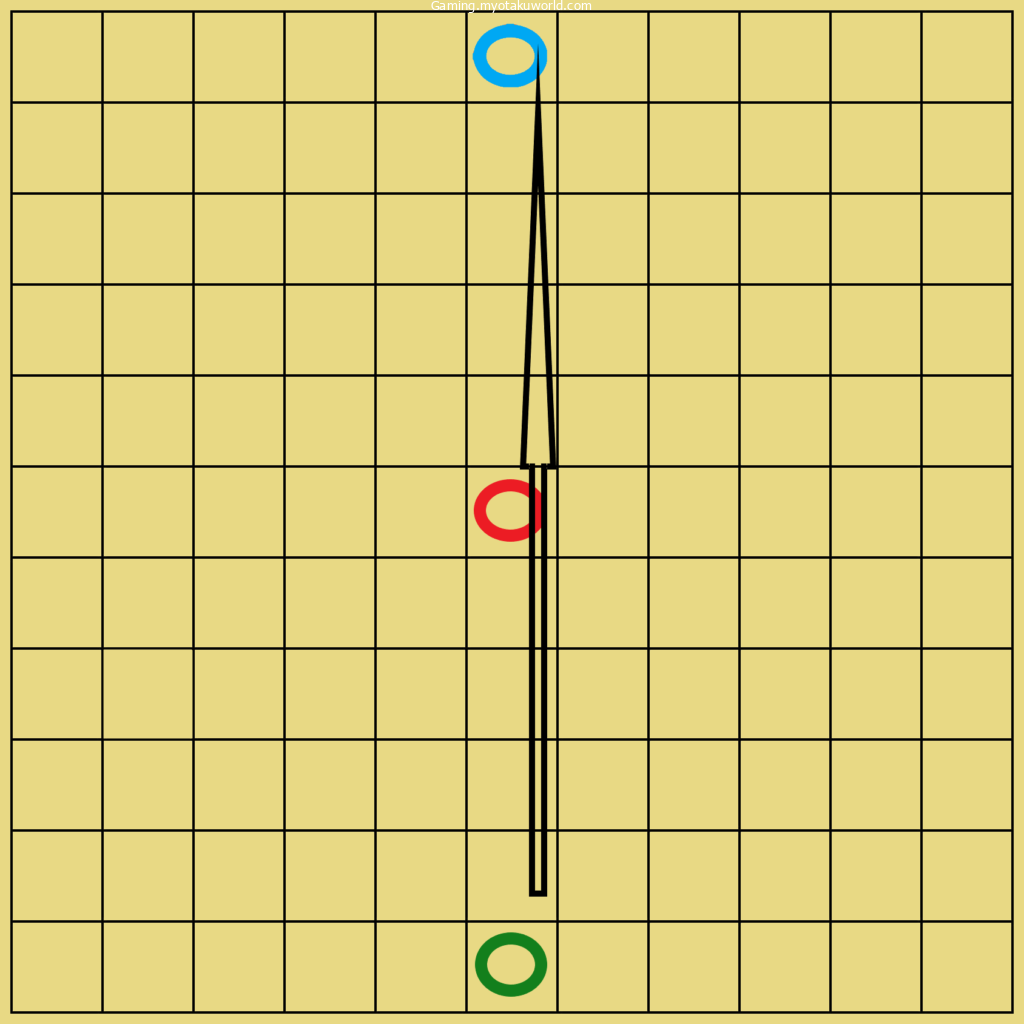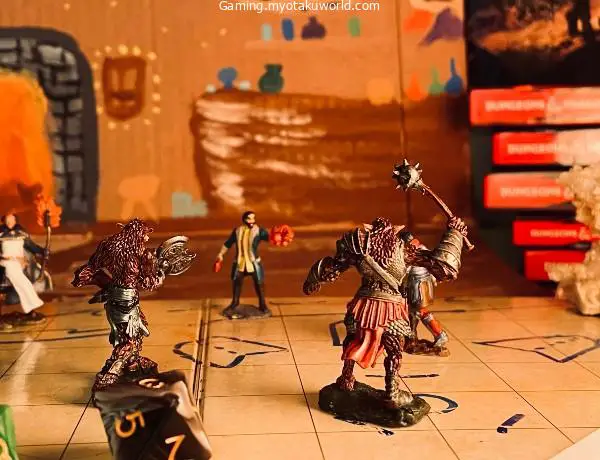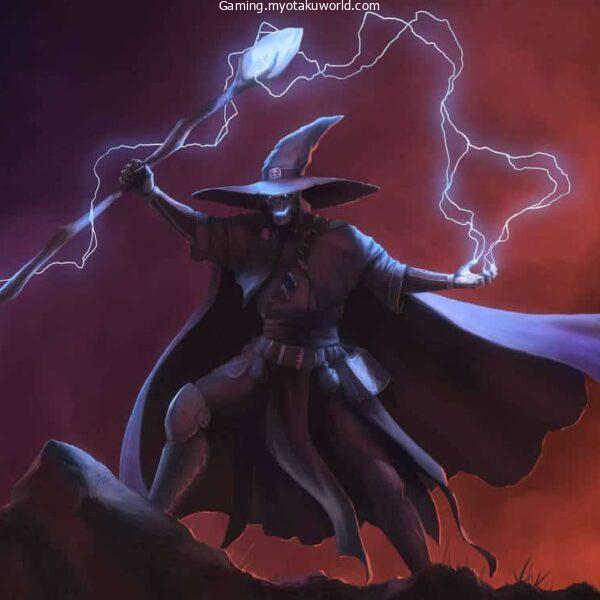A Catapult 5e guide refers to the Xanathar’s Guide to Everything spell. However, I’m going to include actual catapults because war weapons are required in some campaigns.
Catapult appeals to me because I enjoy being creative with my spells and abilities. There are numerous applications for it, whereas other damaging 1st level spells are basic damage spells. I’m addressing you, Magic Missile.
I don’t believe there are any “worthless” D&D spells because I place a high value on roleplaying. However, I believe Catapult is a unique spell that is underutilized.
- Xanathar’s Catapult Spell in DnD 5e
- WHAT DOES CATAPULT DO IN 5E?
- Catapult Spell Rulings
- Casting Catapult at Higher Levels
- WHO CAN CAST CATAPULT IN 5E?
- Catapult 5e (Equipment)
- DM Discretion for Catapult 5e
- Interesting Ways to Use Catapult
- WHO CAN I TARGET WITH CATAPULT 5E?
- CATAPULT 5E DM TIPS
- SIMPLE CATAPULT 5E SPELL TEXT
- FAQs
Xanathar’s Catapult Spell in DnD 5e
- Level – 1st Level Transmutation
- Casting Time – 1 action
- Range – 60 feet
- Duration – Instant
- Component – S
- Class – Wizard, Sorcerer, Artificer
When you cast Catapult, you choose an object weighing 1 to 5 pounds that is within the spell’s range. The object then shoots up to 90 feet in a straight line from its current location.
If it collides with something, it will fall. If it strikes a creature, it must make a Dexterity saving throw. If the creature fails, it takes 3d8 bludgeoning damage. When the object collides with something, it also takes 3d8 damage (even a creature).
Because you can’t target a held item, you can’t rip items from someone’s hands. However, you can target any item weighing less than 5 pounds, and I believe about 1 pound, and sling it up to 150 feet away from you.
WHAT DOES CATAPULT DO IN 5E?
Catapult transforms any object within 60 feet (that isn’t being worn or carried) into a projectile capable of flying up to 90 feet in a straight line. The weight of the object must be between 1 and 5 pounds.
When the object comes into contact with a creature, it makes a Dexterity saving throw; if it fails, the object comes to a halt and the creature takes 3d8 bludgeoning damage (13.5 average damage). If it is successful, the object will continue to fly up to the distance specified by the caster.
If the first creature dodges out of the way, the projectile can still hit another creature as long as the second creature is within range and in a straight line. Here’s an illustration to help you understand what I’m saying:

The green circle is the spellcaster; if they fire an object in the direction of the red circle and the red circle succeeds on their saving throw, the projectile will continue and the blue circle will be damaged.
If the catapulted object collides with a solid surface, it will come to a halt.
Finally, Catapult can be upcast, increasing the damage by 1d8 per slot level higher than the first and allowing you to target objects up to 5 pounds heavier per slot level. If you want, you can start throwing 45-pound objects with this spell at ninth level.
Catapult is one of 11 spells in Xanathar’s that only have a Somatic component — prior to XGtE, only 5 spells in DnD 5e had a Somatic component.
Catapult Spell Rulings
Every spell has rulings, but for some reason, Catapult’s rulings are more difficult to dispute. While your DM and party can decide what to do together, this is the most common way to play.
No Extra Damage
There is no official way to “add” damage to a 1st level spell that already does decent damage. Other spells or abilities that add damage dice can be used, but you cannot add acid damage simply by pouring acid on the object.
No More Range
You can’t add range to a spell unless you have a very specific item, ability, etc. that does so. Catapult’s maximum range (unless updated) is 150 feet, which is already incredible.
Can Do Less Range
You are not required to throw the object the entire 90 feet. You have the option of throwing it ten feet or even five feet. The damage is unaffected by how far you throw the item.
It is not a “weapon.”
The object and the Catapult are not weapons. So anything that “prevents weapon damage” doesn’t work against the Catapult’s magical bludgeoning damage if it hits.
The item has HP.
The item has HP, but it isn’t specified in the spell. The HP of most items is determined by their size. A small item has 5-10 HP, whereas a large item has up to 80. As a result, you’ll need to look up the item’s exact HP (or something like it).
The item must be inactive.
Only objects can be launched, not living creatures. An object is a “discrete, inanimate item” in the game. When I say discrete, I mean detachable. A piece of something cannot be used as an object unless it is first detached.
Not Just a Plot
Many people dismiss Catapult as merely an attack spell, but it is much more. I’d use it to toss something to a teammate or just because I was lazy and didn’t want to go upstairs to get to them.
Dodge and Continue
If the first creature avoids the attack (saves), and another creature is behind him, that creature must make a saving throw. This automatically elevates Catapult to the next level.
Casting Catapult at Higher Levels
When you cast the Catapult spell at higher levels, the maximum weight of the object increases by 5lbs and the damage increases by 1d8 for each level above the first. This can quickly add up.
For example, if you cast Catapult with a level 5 slot, it will deal 7d8 damage and allow you to use an item weighing up to 25lbs. This opens up a lot of possibilities because you’re now throwing medium items.
WHO CAN CAST CATAPULT IN 5E?

The following classes have Catapult on their spell list:
No subclasses get Catapult for free.
Catapult 5e (Equipment)
If you want to find a real catapult, you can ask your DM if you can build or buy one. The price is determined by the size and quality of the catapult, but here are some examples.
Light Catapult
- AC – 15
- HP – 20
- Immune – Poison, Psychic
- Cost – Unknown (probably 100 to 200 gp)
The Light Catapult is a siege weapon created by a fan that I believe is fairly balanced. The Light Catapult is a medium-sized object, roughly the size of a typical barrel.
One person loads the catapult, one person aims it, and one person fires it. It has the ability to fire moderately heavy objects and can hit creatures hiding behind cover.
The attack has a maximum range of 150/300 feet and a minimum range of 60 feet. When hit, it deals 3d10 bludgeoning damage.
Heavy Catapult
- AC – 30
- HP – 50
- Immune – Poison, Psychic
- Cost – 500 to 1000 gp
- Size – 3 spaces (or 15 feet)
Another unique item is the Heavy Catapult. I based the Heavy Catapult on the Light Catapult stats, but you can use this as a starting point and build from there.
It takes at least two people to operate the Heavy Catapult. Each player must perform an action to load, aim, and fire it – it can fire heavy objects. Otherwise, it follows the same rules.
The maximum range is 200 feet, with a minimum of 100 feet. It takes 8d10 bludgeoning damage from the catapult.
Custom Catapult – Bone
- AC – 16
- HP – 80
- Immune – Poison, Psychic
- Cost – can only be made and operated by a Necromancer
This is my favorite custom catapult I’ve seen so far. It is a magical item that works on its own after the Necromancer creates it. It has a turn and requires one action to load and one action to fire.
It can also move at a rate of 10 feet per turn and has a range of 500 feet (a minimum of 60). When it hits, it deals 31 (4d10+4) bludgeoning damage to the target. Each turn, the weapon takes five damage.
When it hits a square, creatures in a 33-foot radius (both friendly and hostile) must make a Dexterity saving throw with a DC of 13 or be knocked prone.
DM Discretion for Catapult 5e

In Dungeons and Dragons, the DM’s discretion is always at work. So DMs can override a few rules, which I support as long as the DM wants everyone to have a good time.
Adding Damage
Stacking damage is possible if you use your imagination, and it does not make your first-level spell overpowered. For example, adding 1d4 elemental damage when you set fire to an object is probably fine after level one.
Including Conditions
Sometimes effects are superior to damage. Certain items, such as a net or a flashbang, have the ability to bind or blind your opponent. There are a total of fifteen conditions, and each of them can be met creatively.
Grapple
While “grapple” is a condition, I mean to grapple with a grappling hook in this case. So, if you can’t throw the required range, you can use Catapult to ensure you can “throw” up to 150 feet.
Striking a Soft Surface
The spell ends if the item comes into contact with a “solid surface.” However, it makes no mention of soft surfaces. This is something you’ll need to talk about with your DM. Does it have any effect?
Interesting Ways to Use Catapult
I love the Catapult spell because there are so many different ways to use it. While there are many more ways to use this amazing spell than I can list, I’d like to suggest a few.
Across the Balcony Throwing
Let me begin with something simple: throwing objects. Assume your group splits up and reassembles on different balconies 60 feet apart. You have the key, and your party members have access to the door. Catapult the keys to the other side!
Putting Puzzles Together
This will not work on every puzzle, but if it’s a Zelda-style press-the-button puzzle, you can throw an object onto the switch. Again, this is very situational, but you get the idea.
Breaking News
Catapult can be used to break down a wall, especially if used at a higher level. This is a good way to see what’s behind something without having to get too close and discover it the hard way.
Oil jars should be discarded.
This is a fantastic idea. While you cannot normally add fire damage to your Catapult, you can do damage while preparing an enemy for fire damage. Catapult oil jars or flasks, then attack with fire on your next turn.
The Flare Gun
If your party becomes separated, you can create a flare gun by shooting fireworks in the air creatively. This is a fun way to use your Catapult while also doing something useful; just don’t hit your Ranger hawk.
Disarming
Catapult cannot be used on a held item, but it can be used on a sword that the enemy has temporarily dropped. So try to disarm them, then shoot their weapon far enough away that they won’t be able to recover it.
Attacks in Retaliation
Assume a bomb has been thrown at you. It would be simple to toss it back with Catapult, especially when not in combat, unless the DM decides to be a jerk and make it impossible for the bomb not to explode first.
Bring Something Near You
This is my preferred Catapult method. Nothing in the description says you have to move things “forward,” but you can bring something to you, which has limitless possibilities. Kill the mimic before it reaches you, or grab the gem without setting off any traps!
WHO CAN I TARGET WITH CATAPULT 5E?
Catapult can technically target an object within 60 feet. Rather than specifying a target creature, you choose a direction for it to move up to 90 feet in.
This allows you to Catapult an object into a space you can’t see, but you must still be able to see and have a clear path to the object you want to launch.
CATAPULT 5E DM TIPS
We recommend allowing catapulted flasks to shatter and apply their rider effects, but not the 1d4 bonus damage from improvised weapons that they normally deal — catapult’s damage, in my opinion, already accounts for the blunt force.
But, chances are, if a player wants to do this, they really want to do it, and preventing them from doing so will ruin their fun.
Furthermore, alchemist’s fire costs 50 gp per flask, which isn’t exactly cheap for a non-game-breaking 1d4 fire damage per round with a simple Dexterity check to end the damage.
Aside from that, we mentioned player catapulting under the Reduce effect of the Enlarge/Reduce spell. I say let them try it if they strap themselves tightly to an object and their combined weight is within the spell’s requirements.
However, I’d rule that the object and reduced gnome both take damage when they strike something, as they are sort of a package deal at that point.
SIMPLE CATAPULT 5E SPELL TEXT
Catapult: (1st-level transmutation, 60 feet, S) (1st-level transmutation, 60 feet, S) Choose a 1-5 pound object that isn’t being worn or carried in the area. It can fly in a straight line up to 90 feet in any direction you want. If it hits a creature, that creature must make a Dexterity saving throw. If the creature is successful, the object will continue in a straight line and the creature will not be harmed. If it fails, it deals 3d8 bludgeoning damage to the object and whatever it strikes. | +1d8 and +5 pound maximum object weight per slot level above 1st.
FAQs
How Fast Does a Catapulted Object Travel?
The average round lasts 6 seconds, and the item can travel up to 90 feet in that time. That equates to a top speed of 15 feet per second or ten miles per hour. Not very quick, but very effective.
DOES THE CATAPULTED OBJECT ARCH OR CURVE IN DND?
No, the object must follow a straight path. Despite its name, a trajectory formula cannot be used to create a curve that gives you more control over the path of an object.
HOW DO YOU RESIST CATAPULT 5E DAMAGE?
It is difficult to resist the catapult’s damage, but it is bludgeoning damage. Even if it isn’t from a weapon, many abilities don’t specify the type of resistance they provide, instead simply saying “Bludgeoning.”
WHAT DOES CATAPULT 5E LOOK LIKE?
The “Catapult” portion of the spell is hidden. I imagine the object flying through the air, surrounded by a few particles. Instead, it would most likely appear to be an object being thrown (yet still only traveling ten mph).
DOES WEIGHT EFFECT CATAPULT DAMAGE?
No. This would make things more difficult. The weight of the object has no effect on the damage, despite appearances. The dm can work around this, but it may be too much math for the effort.
IS CATAPULT 5E A GOOD SPELL?
Catapult is an excellent spell. 13.5 average damage is adequate for a first-level single-target spell, and is comparable to other first-level spells such as Chromatic Orb.
Aside from that, Catapult is a lot of fun to use. It’s unusual for a spell to have so much versatility and potential applications, especially one that appears to be a straight-up “Dex-save-or-suck” blasting spell at first glance.









